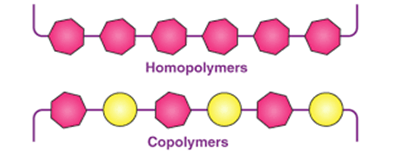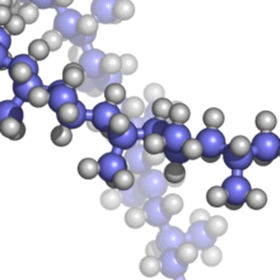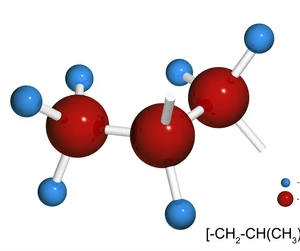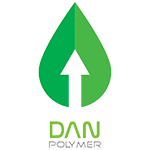PP, a semi-crystalline thermoplastic, is made in its homopolymer form by polymerizing propylene monomer using stereospecific Ziegler-Natta catalysts. The catalyst system is termed stereospecific because it controls the position of the side (methyl) group in each propylene unit in the polymeric chain. A typical catalyst system may be prepared by combining titanium trichloride with tributyl aluminum or its variants. Most commercial PP is isotactic. The physical properties and processing characteristics of PP are mainly determined by the molecular weight (average number of propylene units in a chain), the molecular weight distribution (variation in average length of chains) and the type and amount of copolymerizing monomer. The selection of the right grade of PP for a specific application involves:
- Choosing between homopolymer and copolymer
- Choosing a reactor or controlled rheology grade
- Defining the melt flow rate required and the appropriate additives system
However, with changes in manufacturing technology, operating conditions and catalyst systems, the traditional differences between the properties of homopolymers and copolymers have blurred. Hence, an open mind is necessary to select a proper grade for a particular application.
Copolymer PP
The properties of PP depend on the type and amount of comonomer. There are two basic types: random copolymer and heterophasic or block copolymer. The random polymers contain 1.5% to 6% by weight of ethylene or higher alkenes ( such as 1-butene) in random distribution and in a single chemical phase. The essential difference between a random and a block copolymer is that the block copolymer contains comonomer in the form of a dispersed rubber phase. The structure of random and block copolymerized PP is shown schematically below:
Copolymerized PP gives a softer feel to film and fibre products compared to homopolymers. However, PP copolymers are more expensive than homopolymers. Typical applications of copolymerized PP are battery cases, bumper filler supports, interior trim, glove boxes, package trays and window moldings, video cassette boxes, office chairs, disposable containers, boxes and appliance housings.

Random copolymer
The random copolymer of PP contains chains with a small number (1.5-6%) of ethylene or higher olefin units (such as butene or hexane), dispersed randomly among the propylene units. The presence of ethylene in the polymer chain reduces the tendency to crystalline and results in improved impact strength, a softer feel, a wider range of heat sealability, resistance to creasing and improved clarity. Some of the inherent rigidity of the homopolymer is sacrificed by copolymerization. Due to the lower crystallinity, random copolymers have a lower melting point and specific gravity than homopolymers. This combination makes copolymers attractive for injection-molded houseware, thermoforming, stretch blow molding and film. Random copolymer grade can be used to replace PVC, PS and PET in food packaging and stationary applications.
Block Copolymer
PP homopolymer is copolymerized with ethylene. In block copolymers, the ethylene content is much higher than the random copolymers. The copolymerized part of the material is rubbery and forms a separate dispersed phase within the PP matrix. As a result, block copolymerized pp is much tougher than homopolymerized PP and can withstand higher impact even at low temperatures but at the expense of transparency and softening point. The main applications of the block copolymerized PP are similar to those of elastomer-modified PP but where the impact property requirement is not that critical.
Application Copolymer PP
- Battery cases
- Bumper filler supports
- Interior trim
- Glove boxes
- Package trays
- Video cassette boxes
- Boxes and appliance housings.



